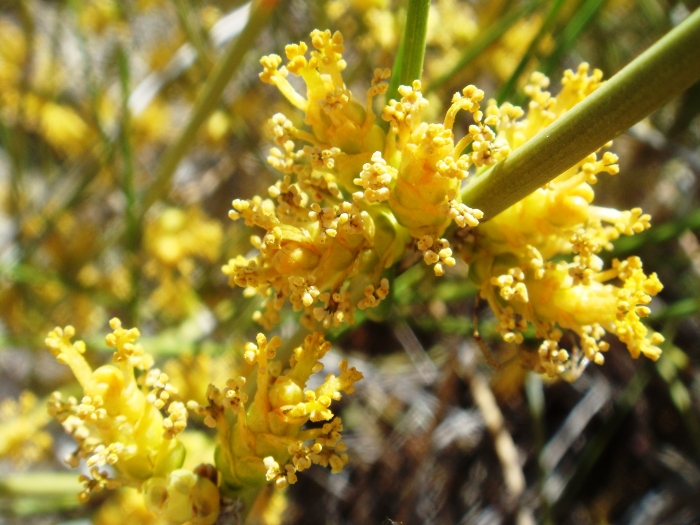Rough Jointfir
(Ephedra aspera)
Rough Jointfir (Ephedra aspera)
/
/

Miwasatoshi
CC BY-SA 4.0
Image By:
Miwasatoshi
Recorded By:
Copyright:
CC BY-SA 4.0
Copyright Notice:
Photo by: Miwasatoshi | License Type: CC BY-SA 4.0 | License URL: https://creativecommons.org/licenses/by-sa/4.0 | Uploader: Miwasatoshi | Publisher: Wikimedia Commons | Title: Ephedra-aspera-20080322.JPG | Notes: ;Scientific name: Epimedium grandiflorum var. thunbergianum *{{ja|イカリソウ}} Place:Osaka-fu Japan {{Information| |Description = Epimedium grandiflorum var. thunbergianum |Source = KENPEI's photo |Date = 2007-04-21 |Author = KENPEI |Permission |



















































Estimated Native Range
Summary
Ephedra aspera, commonly known as Rough Jointfir, is an evergreen shrub or subshrub native to arid desert regions and scrublands in the Southwestern United States and Northwest Mexico. It typically grows to heights exceeding 1 meter (3.3 ft) and is characterized by its highly branched structure composed of numerous long, yellow-gold twigs. The plant’s inconspicuous flowers are usually greenish-yellow and bloom in the spring, followed by small, non-showy cones. Rough Jointfir is adapted to harsh desert conditions, thriving on well-drained sandy or gravelly soils.
Rough Jointfir is valued for its drought tolerance and architectural form, making it a suitable choice for xeriscaping and desert gardens. It is often used in rock gardens, as a specimen plant, or in naturalistic plantings. This plant requires minimal maintenance once established, needing only occasional pruning to maintain its shape. It is important to note that Rough Jointfir has medicinal properties and has been used traditionally, but it contains ephedrine, which can be dangerous if misused. Gardeners should be cautious of its potential toxicity. In cultivation, Rough Jointfir requires full sun exposure and very low to low water once established, reflecting its desert origins. It is not prone to many diseases but can suffer from root rot if overwatered or planted in poorly drained soils.CC BY-SA 4.0
Rough Jointfir is valued for its drought tolerance and architectural form, making it a suitable choice for xeriscaping and desert gardens. It is often used in rock gardens, as a specimen plant, or in naturalistic plantings. This plant requires minimal maintenance once established, needing only occasional pruning to maintain its shape. It is important to note that Rough Jointfir has medicinal properties and has been used traditionally, but it contains ephedrine, which can be dangerous if misused. Gardeners should be cautious of its potential toxicity. In cultivation, Rough Jointfir requires full sun exposure and very low to low water once established, reflecting its desert origins. It is not prone to many diseases but can suffer from root rot if overwatered or planted in poorly drained soils.CC BY-SA 4.0
Plant Description
- Plant Type: Shrub, Subshrub
- Height: 2-3 feet
- Width: 2-3 feet
- Growth Rate: Moderate
- Flower Color: N/A
- Flowering Season: Non-Flowering
- Leaf Retention: Evergreen
Growth Requirements
- Sun: Full Sun
- Water: Very Low, Low
- Drainage: Fast
Common Uses
Drought Tolerant, Low Maintenance
Natural Habitat
Native to arid desert regions and scrublands
Other Names
Common Names: Mormon Tea, Pitamorealaspera Mormon Tea, Boundary Ephedra, Pitamoreal
Scientific Names: , Ephedra aspera, Ephedra nevadensis var. aspera, Ephedra peninsularis, Ephedra reedii, Ephedra nevadensis subsp. aspera, Ephedra reediae,
GBIF Accepted Name: Ephedra aspera Engelm. ex S.Watson